EXPO: Magic of the White City is a film of genre Documentary released in USA on 16 september 2005 with Gene Wilder
EXPO: Magic of the White City (2005)

If you like this film, let us know!
- Infos
- Casting
- Technical infos
- Photos
- Videos
- Film quotes
- Characters
- Music
- Awards
Released in USA 16 september 2005
Length 1h56
Genres Documentary
Themes Documentary films about architecture, Documentary films about historical events, Documentary films about technology, Documentary films about cities
Rating72%










Expo: Magic of the White City is a historical documentary released to DVD on September 13, 2005. Directed by Mark Bussler and narrated by Gene Wilder, the documentary tells the story of Chicago's World's Columbian Exposition in 1893. It begins by explaining Frederick Law Olmsted's planning of the fair and the architecture by Daniel Burnham. It also details exhibits by many people, including George Westinghouse, Nikola Tesla and Thomas Edison.
In addition to detailing the fair itself, the documentary also describes the Midway Plaisance. Features of the Midway included bellydancing, side-shows, saloons, and a large Ferris wheel. Finally Expo: Magic of the White City discusses the aftermath of the fair and the legacy it left.
Janson Media acquired the copyright to the film in 2010.
Actors
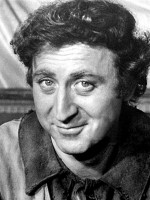
Gene Wilder
(Narrator (voice))
Comments
Leave comment :
Suggestions of similar film to EXPO: Magic of the White City
There are 24 films with the same actors, 8970 with the same cinematographic genres, 2208 films with the same themes (including 0 films with the same 4 themes than EXPO: Magic of the White City), to have finally 70 suggestions of similar films.If you liked EXPO: Magic of the White City, you will probably like those similar films :

Being Osama (2004)
Directed by Mahmoud Kaabour
Origin Canada
Genres Documentary
Themes Films based on the September 11 attacks, Films about racism, Films about religion, Films about terrorism, Transport films, Aviation films, Documentary films about racism, Documentary films about law, Documentary films about war, Documentary films about historical events, Documentaire sur une personnalité, Documentary films about politics, Documentary films about religion, Documentary films about technology, Documentary films about terrorism, Documentary films about cities, Political films, Films about Islam, Disaster films, Films about aviation accidents or incidents, Films about language and translation, Films about hijackings
Rating70%





The documentary details the lives of six Montreal Arab men, all with the first name "Osama":
 , 1h27
, 1h27Origin USA
Genres Documentary
Themes Films based on the September 11 attacks, Films about religion, Films about terrorism, Transport films, Aviation films, Documentary films about law, Documentary films about war, Documentary films about historical events, Documentary films about politics, Documentary films about religion, Documentary films about technology, Documentary films about terrorism, Documentary films about cities, Political films, Films about Islam, Disaster films, Films about aviation accidents or incidents, Films about hijackings
Actors Kathleen Turner
Rating65%






The Love We Make (2011)
, 1h31Origin USA
Genres Documentary, Musical
Themes Films based on the September 11 attacks, Films about music and musicians, Films about religion, Films about terrorism, Transport films, Aviation films, Documentary films about law, Documentary films about war, Documentary films about historical events, Documentary films about music and musicians, Documentary films about politics, Documentary films about religion, Documentary films about technology, Documentary films about terrorism, Documentary films about cities, Musical films, Political films, Films about Islam, Disaster films, Films about aviation accidents or incidents, Films about hijackings
Actors Paul McCartney, David Bowie, Jim Carrey, Harvey Weinstein, Leonardo DiCaprio, Jimmy Fallon
Rating64%






Cairo Drive (2013)
, 1h19Genres Documentary
Themes Transport films, Documentary films about historical events, Documentary films about politics, Documentary films about technology, Documentary films about cities, Political films
Rating74%





The film begins in 2009 and opens with aerial shots of Cairo's geometrical gridlock, while Handel's Water Music plays seamlessly in the background. The serenity is quickly broken, however, by a series of ground-level shots of bumper to bumper traffic, shouting taxi drivers, and an endless symphony of car horns. Amidst this mélange of 14 million vehicles, it appears that not even the traffic police understand how it all works. Yet through a series of comical behind the wheel interviews, it becomes clear that the array of sounds and gestures represents an ongoing dialogue between the city's 20 million residents. However, the film also touches upon the city's darker side. Corruption is rampant and despite residents' crafty work-arounds, the situation is without question out of control and getting worse. One resident describes crossing Cario's streets, many of which have eight or more "lanes", as a giant game of Frogger. A more poignant moment comes when a long-time American resident of Cairo recounts how his daughter, 18, was struck and killed by a bus.
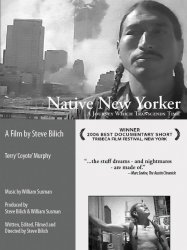
Native New Yorker (2005)
, 13minutesOrigin USA
Genres Documentary
Themes Films based on the September 11 attacks, Environmental films, Films about religion, Films about terrorism, Transport films, Aviation films, Documentary films about law, Documentary films about war, Documentary films about historical events, Documentary films about politics, Documentary films about religion, Documentary films about technology, Documentary films about terrorism, Documentary films about cities, Political films, Films about Islam, Disaster films, Films about aviation accidents or incidents, Films about hijackings
Rating80%






December 7th (1943)
, 34minutesDirected by Gregg Toland, John Ford
Origin USA
Genres War, Documentary, Action, Historical
Themes Seafaring films, Transport films, Aviation films, Documentary films about war, Documentary films about historical events, Documentary films about technology, Political films, Documentary films about World War II, United States Armed Forces in films
Actors Walter Huston, Dana Andrews, Harry Davenport, George O'Brien, Paul Hurst, James Kevin McGuinness
Rating60%





Jugée trop « compatissante » envers les japonais, et coupée au montage par l’État-Major américain, cette reconstitution hautement réaliste reçut néanmoins l’Oscar® du meilleur documentaire en 1943.
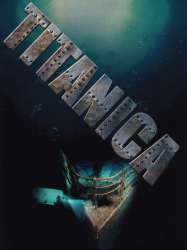
Titanica (1992)
, 1h35Genres Documentary
Themes Seafaring films, Transport films, Documentary films about historical events, Documentary films about technology, Disaster films, Films about seafaring accidents or incidents
Actors Leonard Nimoy
Rating63%





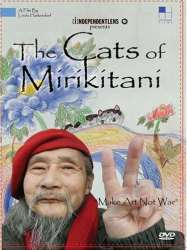
The Cats of Mirikitani (2006)
, 1h14Genres Documentary
Themes Films based on the September 11 attacks, Prison films, Films about racism, Films about religion, Films about terrorism, Transport films, Aviation films, Documentary films about the visual arts, Documentary films about racism, Documentary films about law, Documentary films about war, Documentary films about historical events, Documentaire sur une personnalité, Documentary films about politics, Documentary films about religion, Documentary films about technology, Documentary films about terrorism, Political films, Films about Islam, Documentary films about World War II, Disaster films, Films about aviation accidents or incidents, Films about hijackings
Rating81%





In 2001 Japanese American painter, Jimmy Mirikitani (born Tsutomu Mirikitani), and over 80 years old, was living on the streets of lower Manhattan. Filmmaker, Linda Hattendorf, took an interest and began
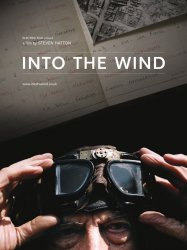
Into the Wind (2010)
Origin United-kingdom
Genres Documentary
Themes Transport films, Aviation films, Documentary films about war, Documentary films about historical events, Documentaire sur une personnalité, Documentary films about health care, Documentary films about technology, Political films, Documentary films about World War II
Trois années après avoir été amputé de la jambe droite au-dessus du genou, Terry Fox décide de lever des fonds pour la recherche sur le cancer en courant un marathon chaque jour à travers le Canada. En 143 jours, il couvre plus de 5000 kilomètres, inspirant des millions et touchant la nation au cœur avec son marathon de l’espoir. Primé deux fois "Most Valuable Player" par la National Basketball Association, fier d’être Canadien, Steve Nash présente pour son premier film l’histoire incroyable de persévérance et d’espoir de Terry Fox.
 , 30minutes
, 30minutesOrigin USA
Genres Documentary
Themes Environmental films, Documentary films about environmental issues, Documentary films about war, Documentary films about historical events, Documentary films about nuclear technology, Documentaire sur une personnalité, Documentary films about technology
Actors Joanne Woodward
Rating57%





 Connection
Connection